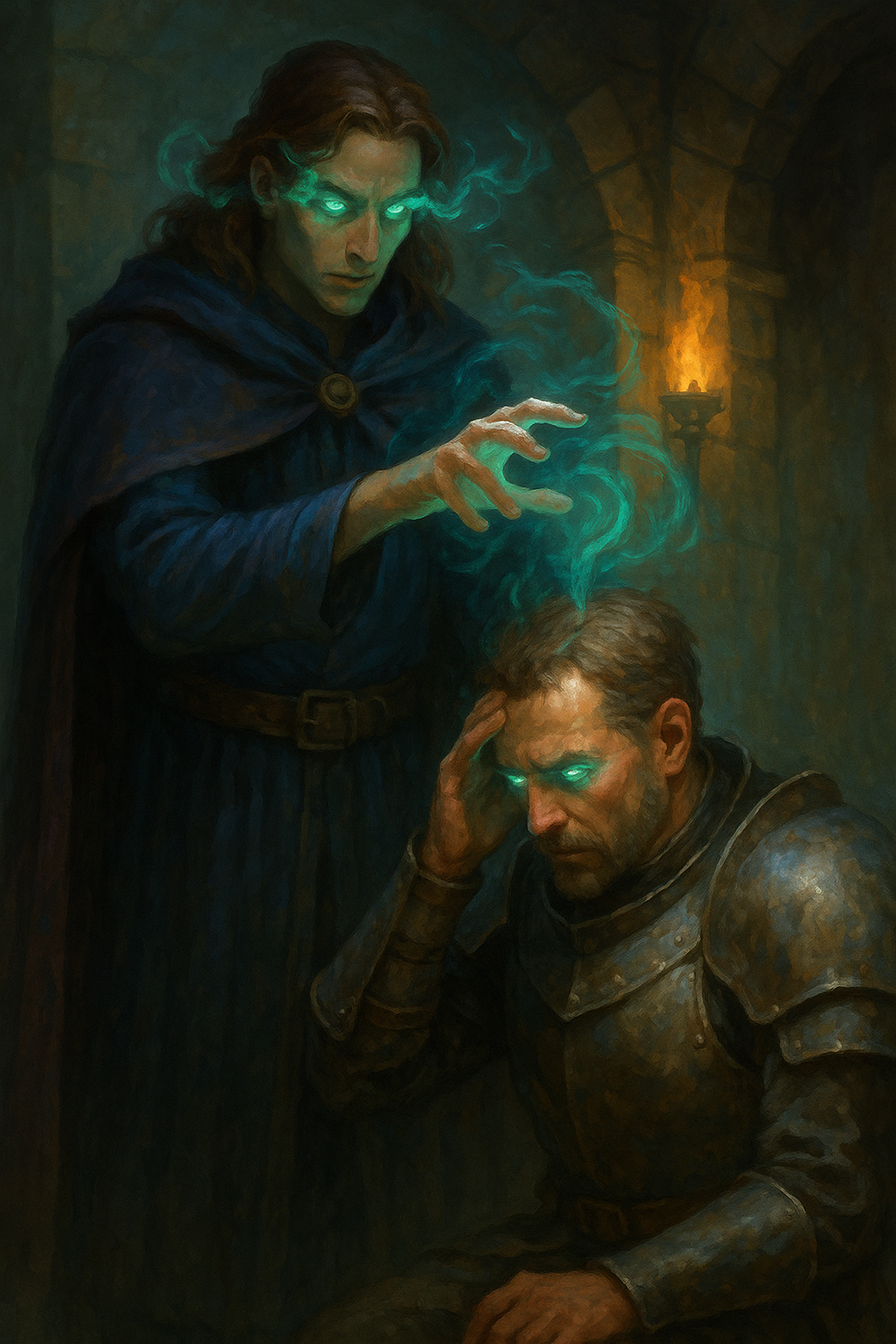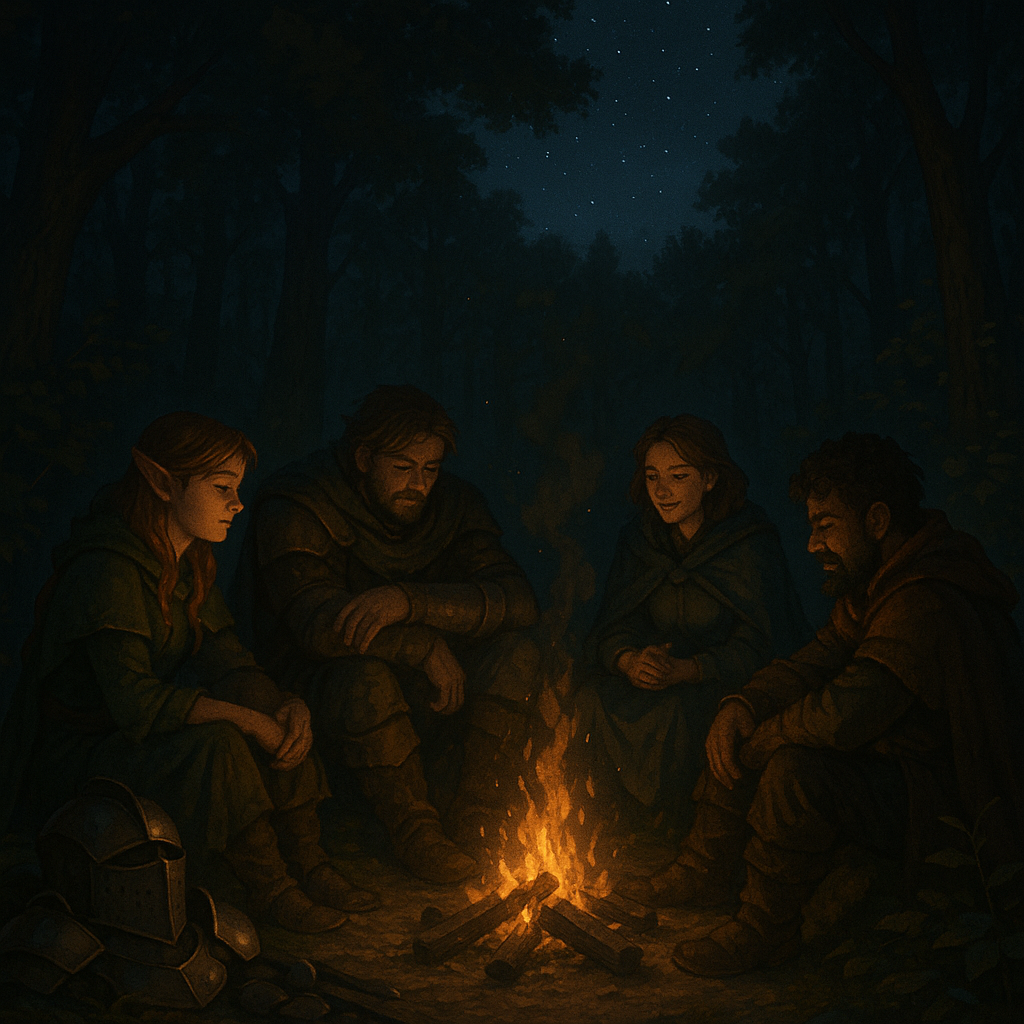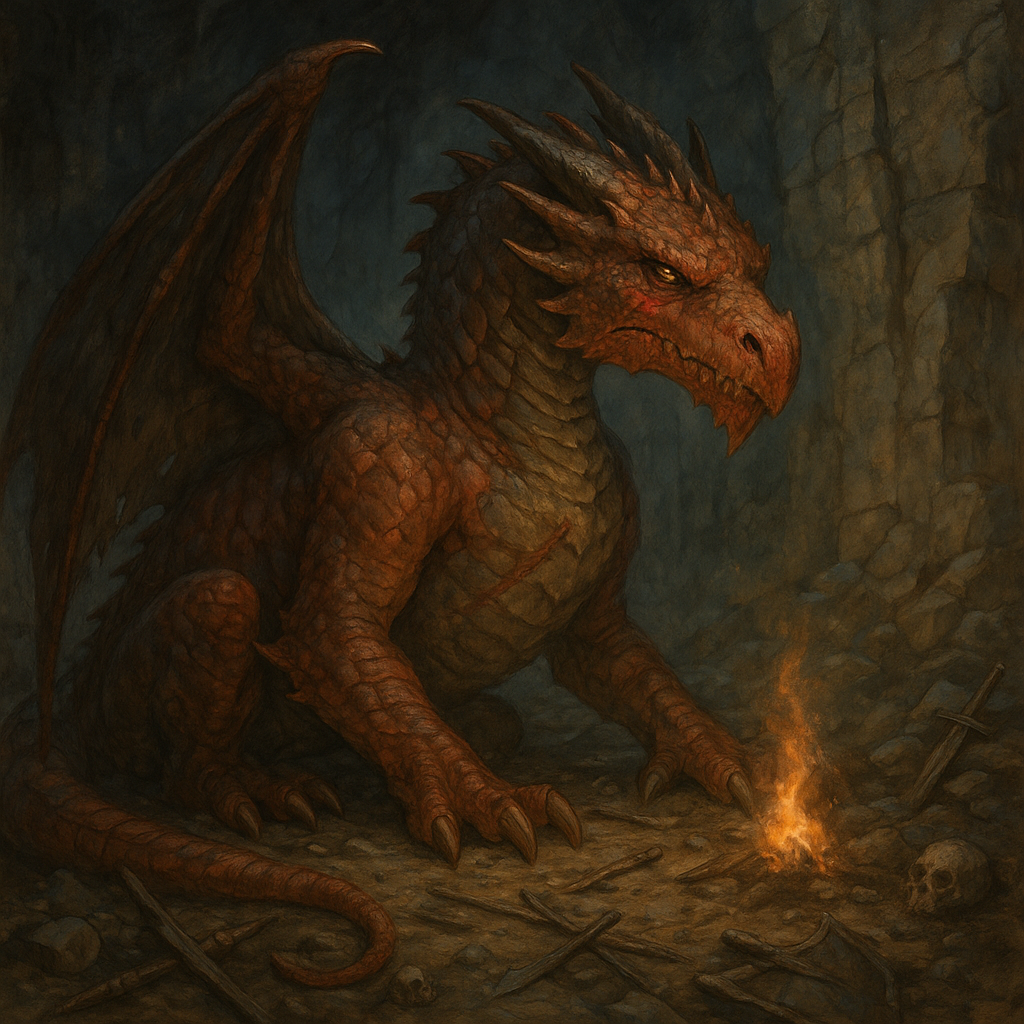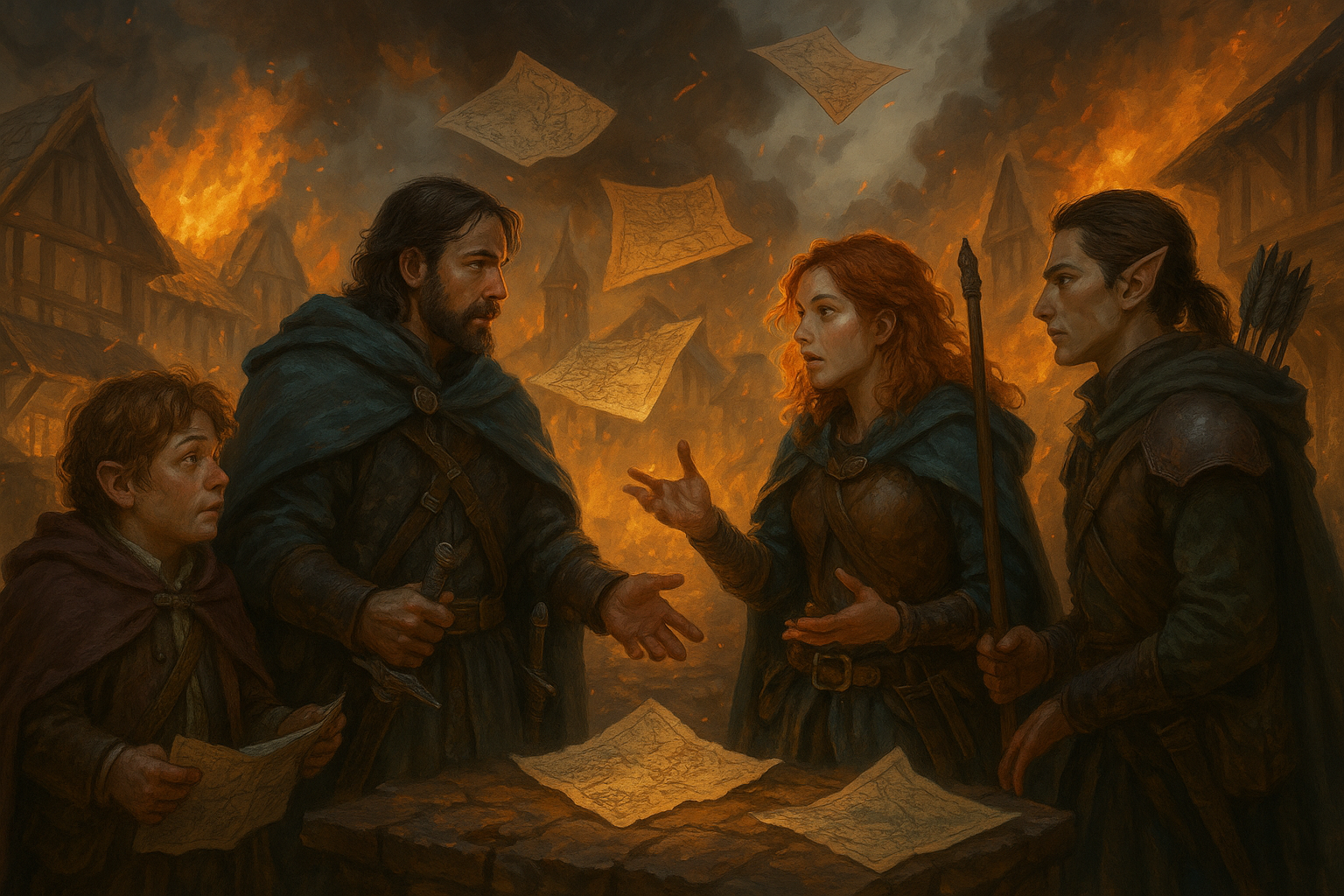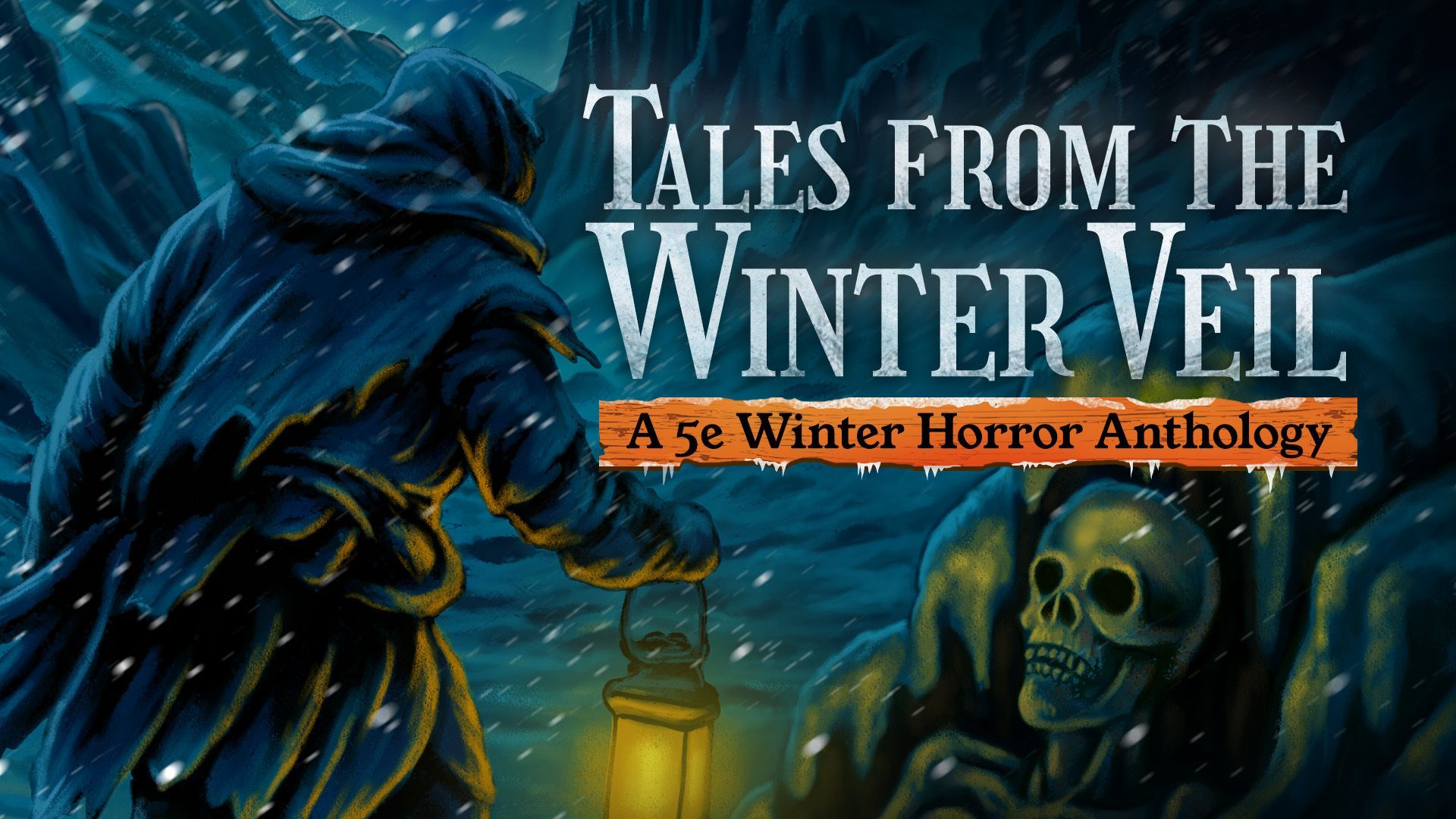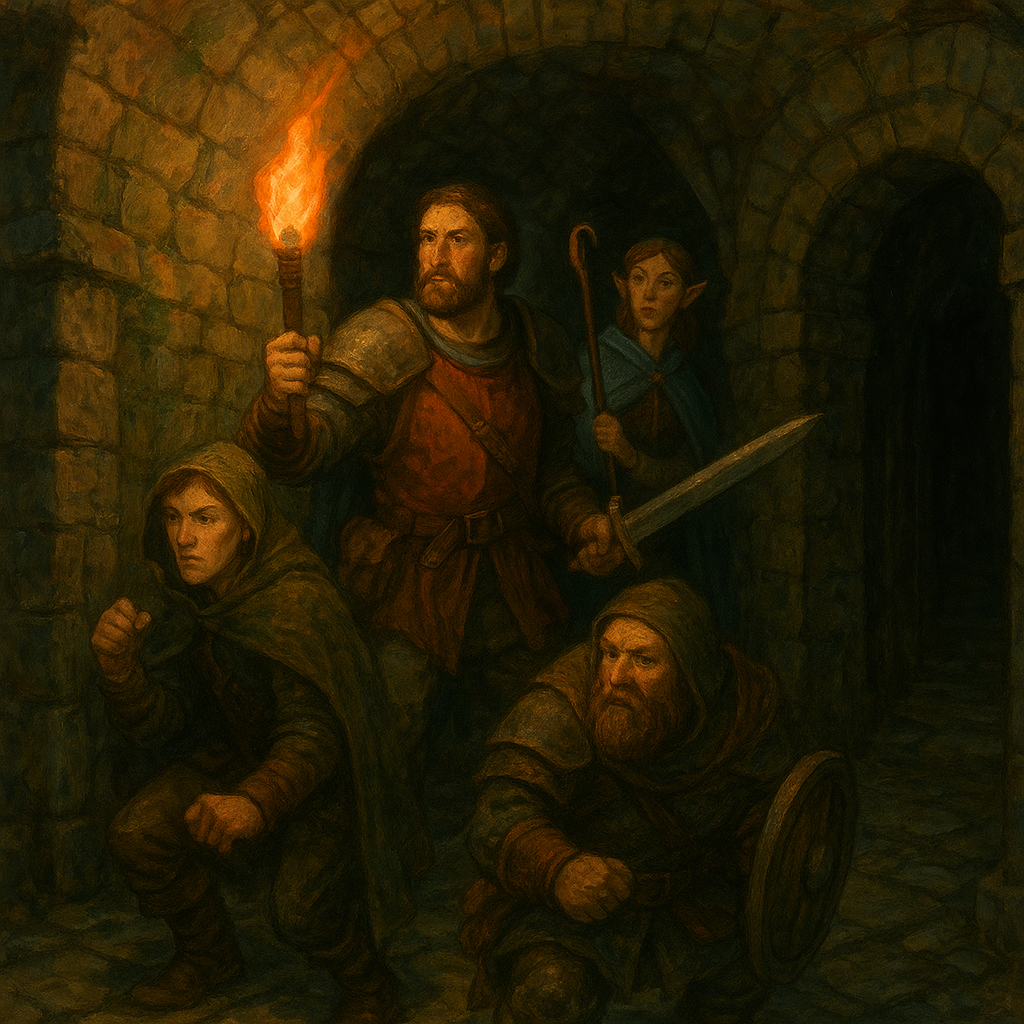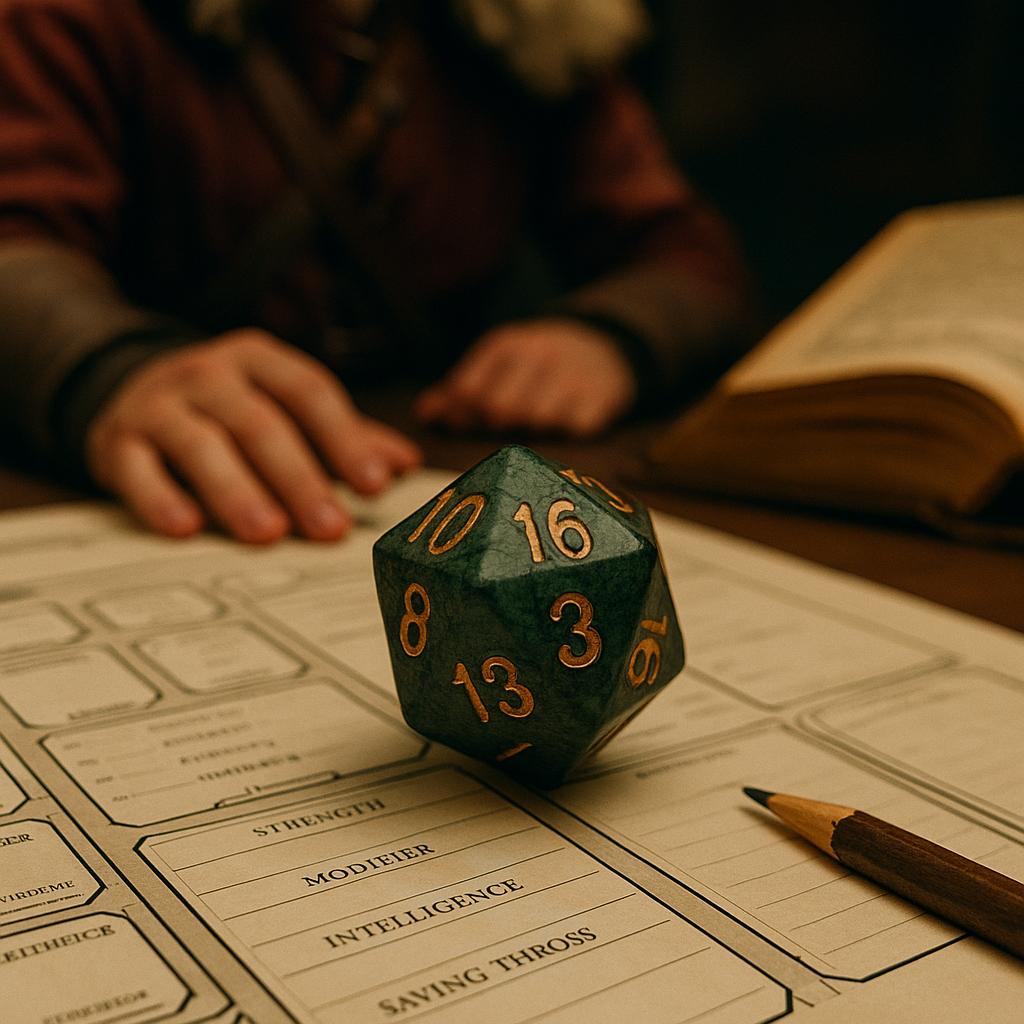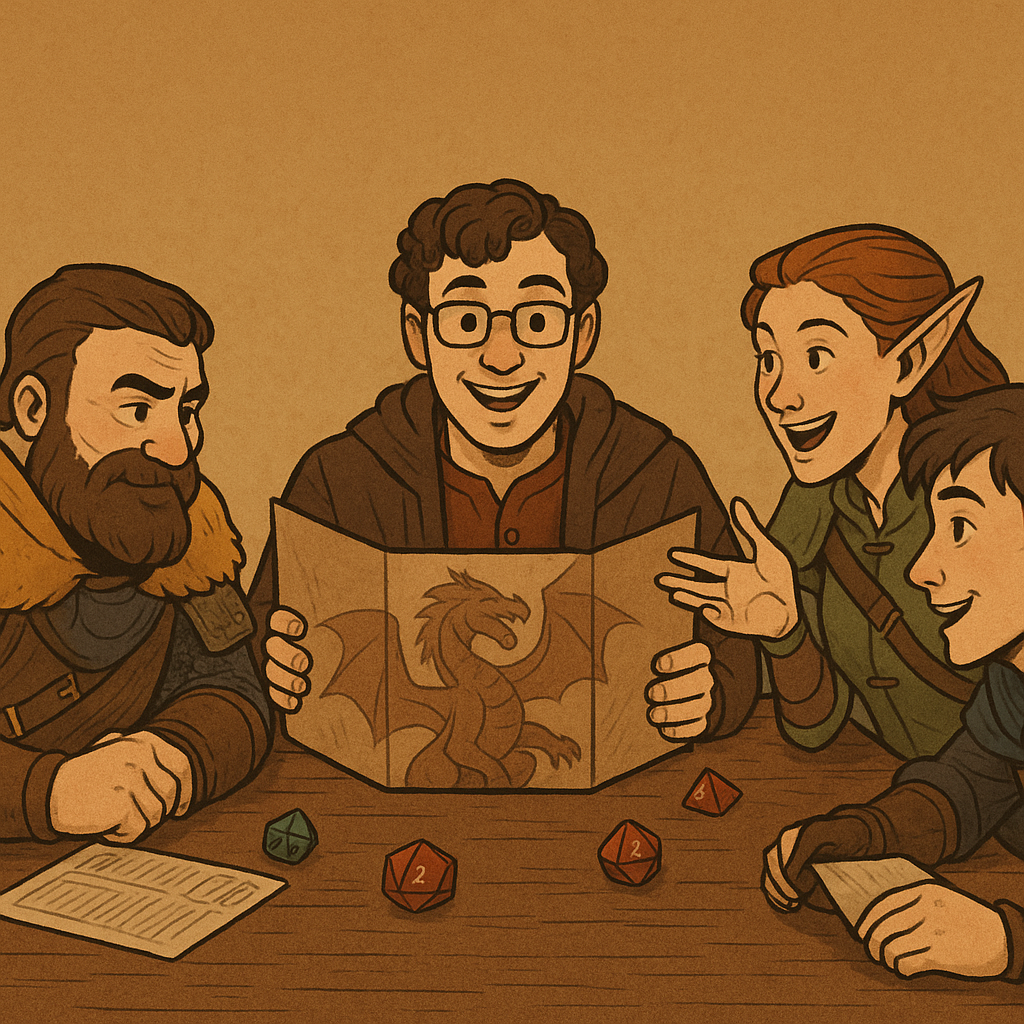After the Campaign Ends: Post-Game Rituals to Celebrate and Reflect
The final farewell for a campaign
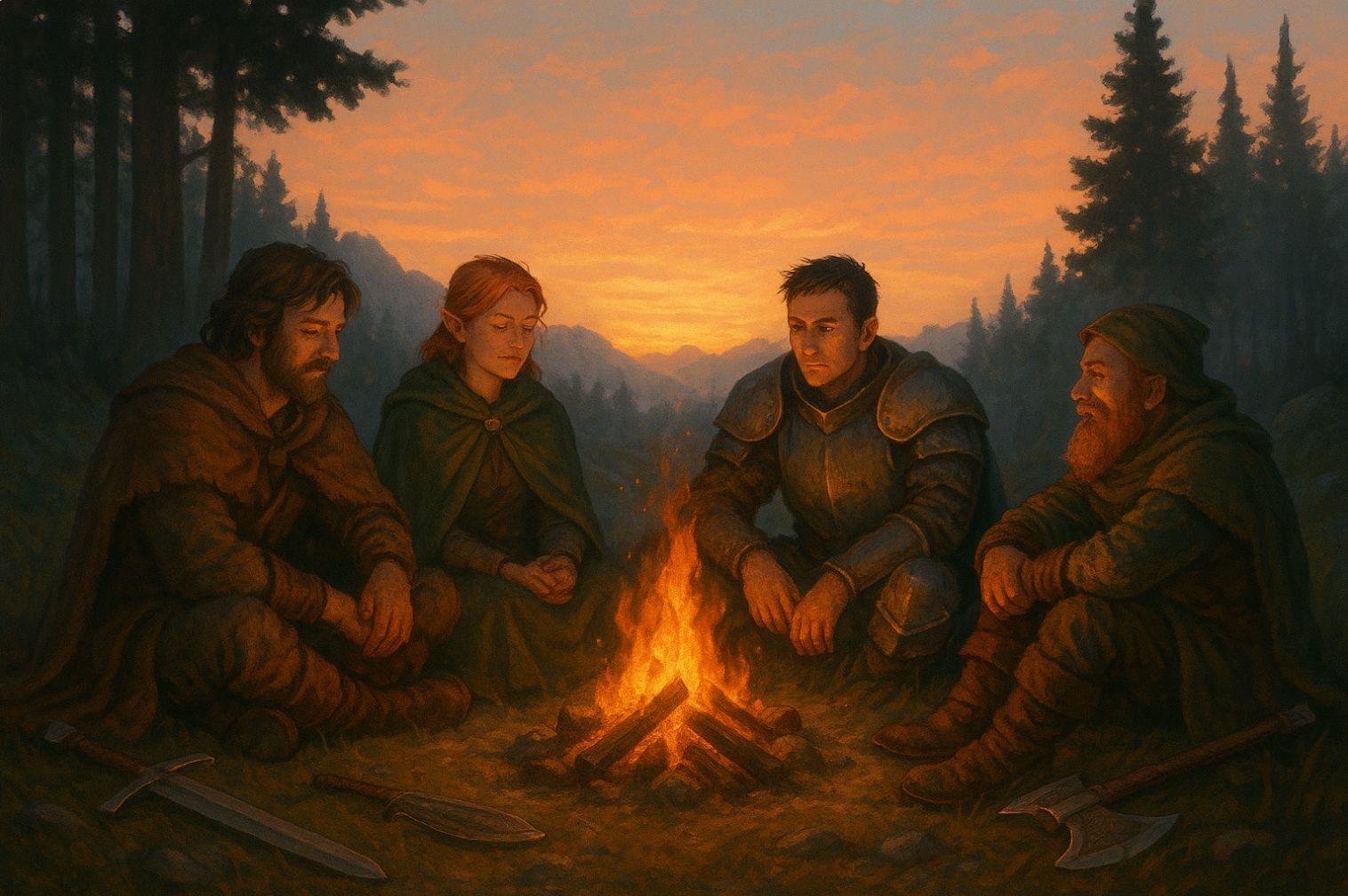
Dear Readers,
Every Dungeon Master knows the feeling. The last die has rolled. The final monster lies defeated. The quest is complete. The characters — your characters, your friends — stand victorious or broken, staring into the sunset of a story that has lived and breathed for months, sometimes years. Then the question lingers like smoke after a battle: What now?
Ending a Dungeons & Dragons campaign is one of the most emotional and delicate tasks a Dungeon Master can face. For many groups, the final session is both a triumph and a farewell — not only to the characters but to the world you’ve all shared. And yet, the end doesn’t have to mean silence.
A campaign deserves closure. Just as heroes commemorate their victories and mourn their losses, we too can mark the end of our shared stories with rituals, reflection, and celebration. These moments help players process the journey, honor the characters they’ve grown to love, and set the stage for whatever adventures come next.
Today, we’ll explore the art of post-campaign rituals — from emotional epilogues to keepsakes, from group reflections to lessons learned. Whether you’ve just wrapped your first one-shot turned epic or are saying goodbye to a saga that lasted half a decade, these ideas will help you give your campaign the ending it truly deserves.
Why Endings Matter
In storytelling, beginnings and endings are the two moments that leave the deepest impression. The first session sets the tone; the last one seals the memory.
Endings give meaning to the journey. Without a proper conclusion, the story feels incomplete. Without reflection, the experiences blur together. A good ending helps your players step away with satisfaction — a sense that what they created mattered.
Psychologically, closure is important too. For many players, campaigns aren’t just stories; they’re communities, friendships, and creative outlets. Ending without reflection can feel like losing a part of yourself. Rituals help mark that transition.
Step One: The Epilogue Session
Before you dive into farewells, consider devoting a final session purely to the aftermath. Many DMs end on the climax — the boss defeated, the world saved. But some of the most memorable emotions arise in the quiet afterward.
Let the World Breathe
The epilogue session is your space to explore what happens next. How does the world react to the heroes’ deeds? How do NPCs rebuild? What becomes of the great villain’s fortress or the throne the players fought for?
Describe scenes of change. Villages lighting lanterns to honor the fallen. Rivers flowing untainted once more. The sound of hammers rebuilding cities the party saved. These images ground the victory in meaning.
Character Epilogues
Give each player a chance to narrate their character’s future. Ask:
- Where do they go after this?
- What becomes of their relationships?
- What legacy do they leave behind?
Encourage creativity. A rogue may retire to run a thieves’ guild. A cleric may return to the temple as a reformer. A barbarian may disappear into legend, their name whispered around campfires.
When you share epilogues in a group, they form a mosaic of closure — each story shining in the shared light of what came before.
Step Two: Debrief the Players
Once the fiction concludes, step out of character. This is where the real-world reflection begins.
Gather everyone (in person or online) and talk about the campaign. Ask questions like:
- What was your favorite moment?
- Which session or NPC surprised you the most?
- What did you learn about your character — or yourself — during this campaign?
- What would you like to see done differently next time?
This open conversation helps players articulate what they loved and process what they’ll miss. It’s also invaluable feedback for you as a DM.
A campaign’s end is not just an ending — it’s a learning opportunity. These discussions deepen trust and improve your group’s communication for future games.
Step Three: Create a Keepsake
Rituals often work best when something tangible remains. A physical or digital memento helps commemorate the campaign’s journey. Here are some ideas:
Campaign Scrapbook
Compile session notes, player sketches, inside jokes, and screenshots of chat logs. Add a “quote wall” of memorable lines or funny moments. Print it as a small photo book or share it as a PDF.
Character Sheets (Framed or Annotated)
Ask players to annotate their final character sheets with reflections: favorite spells, most ridiculous criticals, lessons learned. Frame them or store them in a shared folder for nostalgia.
Maps and Artifacts
If your campaign world had custom maps, print one marked with all the key locations the party visited. Include notes like “Here we accidentally burned down the tavern” or “Our first dragon fight.”
Campaign Playlist
Music is memory. Create a playlist of songs that defined the campaign’s tone — battle themes, emotional pieces, or even music players suggested. Listening later can instantly transport you back.
Digital Memorial
For online groups, consider a shared Google Drive or Discord channel dedicated to memories, fan art, and recaps. Keep it unlocked even after the campaign ends so players can revisit it.
Step Four: Host a Celebration
Whether it’s pizza and laughter around a table or a video call with toasts, marking the end with celebration helps transform finality into joy.
The Feast
Recreate the fantasy trope of the “heroes’ feast.” Bring food and drink inspired by the campaign: dwarven ale, elven bread, goblin stew (preferably symbolic). Toast to each character’s deeds.
You might even roleplay it in-character:
“To the fallen and the living,” says the paladin, raising a mug.
“To the loot we didn’t lose!” shouts the rogue.
These moments blur the line between player and character in the best way possible.
Awards Ceremony
Lighthearted awards are a great way to end. Categories like:
- Most Dramatic Death Scene
- Most Creative Use of a Spell Slot
- Best NPC Impression by a Player
- Lifetime Achievement in Chaotic Decisions
Custom certificates or even just handwritten notes make it personal and funny.
Watch Party or Recap Video
If you recorded sessions, create a highlight reel. If not, summarize the campaign in slideshow form — images, quotes, music. Watching it together is a powerful shared experience.
Step Five: Honor the NPCs
NPCs deserve closure too. They are part of the emotional tapestry your players helped weave. In your post-campaign session, revisit their fates briefly.
Perhaps the innkeeper who gave them their first quest now runs an expanded business. Perhaps the rival adventuring party reforms under a new leader. Perhaps the villain’s loyal second-in-command disappears into the night, hinting at a future story.
You can even let players write one NPC epilogue each. It invites collaboration and makes the world feel truly shared.
Step Six: The Letters Home
A favorite ritual for many groups is writing letters in character after the campaign ends.
Each player writes a short note from their character to another — or even to the DM — reflecting on the journey. They can be heartfelt, humorous, or cryptic.
Examples:
- The stoic fighter writes to the cleric, admitting how much they valued their friendship.
- The bard sends a song lyric about their adventures to the group.
- The wizard drafts an unfinished letter about new research inspired by the final battle.
Reading these letters aloud is often emotional, even tearful, but deeply rewarding.
Step Seven: The DM’s Farewell
Dungeon Masters, this one’s for you. Your campaign has been your world — your art, your architecture, your stage. Ending it can feel like saying goodbye to a piece of yourself.
Write your own reflection, even privately. Summarize what you learned, what surprised you, and what the players taught you.
Then tell them — in or out of character — how grateful you are. A simple thank-you goes a long way. Let them know what their creativity brought to your story.
DMing is an act of generosity. The post-game is your moment to receive gratitude in return.
Step Eight: The Legacy Table
For groups who plan to continue playing together, create a “Legacy Table” — a document or set of notes that tracks the world after the heroes’ tale ends.
Record how their deeds shaped the setting. Did they change the political map? Establish a guild? Leave a bloodline?
This legacy becomes canon for future campaigns. New characters can reference the heroes as historical figures. Finding a statue or old journal from a past campaign adds layers of continuity and nostalgia.
You can even allow players to play their descendants or apprentices in a later story.
Step Nine: The Campaign Debrief for You, the DM
Once the players have gone home (or logged off), take some time to debrief privately.
Ask yourself:
- What parts of the story worked best?
- What pacing issues did you face?
- Which NPCs resonated with the players most?
- How did the tone evolve over time?
Write these notes down. They’ll help you refine your craft for future campaigns.
If you have the energy, write a short “post-mortem” summary — what you learned as a storyteller. Reading it later can be inspiring.
Step Ten: The Epilogue Hook
Even endings can carry a spark of continuation. A small post-credits scene — an artifact pulsing faintly, a villain’s journal discovered, a voice whispering from the shadows — can give the story a lingering heartbeat.
It’s not about promising a sequel; it’s about showing that the world continues. It reminds players that though their characters’ chapter has closed, the story of the world goes on.
Step Eleven: Letting Go
Sometimes, what players need most is permission to let go.
A long-running campaign can feel like a relationship or a life stage. Ending it brings a mix of grief and relief. Encourage your players to embrace both.
If someone feels sad about it ending, acknowledge that openly. It’s okay to miss something beautiful. It’s okay to wish it had gone longer. Gratitude and sadness can coexist.
This emotional honesty deepens your group’s bond beyond the game itself.
Step Twelve: Share the Story Beyond the Table
For groups that love to create, sharing the story after the campaign ends can be fulfilling.
Publish the Chronicle
Summarize your campaign as a blog post, zine, or social media thread. Other DMs and players love reading campaign stories. It’s a way of preserving your group’s creativity.
Create a Fictionalized Version
Some players enjoy writing short stories or novellas based on their characters. Encourage it. The campaign can inspire other forms of art — comics, songs, poetry.
Commission or Create Artwork
A group portrait of the adventuring party, painted or digitally rendered, becomes a lasting keepsake. If funds allow, commission an artist to depict a key scene or the final battle.
Step Thirteen: The Memory Wall
If your group meets in person, dedicate a physical space — even a corkboard — for keepsakes. Pin maps, doodles, and quotes.
Each player can contribute one item that symbolizes their character: a trinket, token, or note. Over time, you’ll build a visual archive of your shared adventures.
For online groups, a “digital memory wall” works too — a collaborative board where everyone uploads art, screenshots, and quotes.
Step Fourteen: Post-Credits Scene Ideas
Just for fun, here are a few ideas for optional “final scenes” you can narrate at the very end:
- A child picks up the fallen hero’s sword in a forgotten field.
- The villain’s laughter echoes faintly from a sealed tomb.
- A bard in a faraway inn sings the party’s tale, not quite getting the details right.
- The cleric’s holy symbol begins to glow, hinting at the gods’ approval — or warning.
- Two NPCs meet years later and reminisce about “those mad adventurers.”
These scenes leave the story alive in the players’ imagination.
Step Fifteen: Lessons Learned
Every campaign teaches lessons — about storytelling, collaboration, and even life.
Perhaps you learned that pacing your sessions is easier when you plan downtime scenes.
Perhaps you learned that the quiet moments mattered as much as the climaxes.
Ask your players what they learned too. Their insights often surprise you: teamwork, empathy, creative problem-solving. Many discover that the friendships forged around the table are the true treasure.
Step Sixteen: The Gentle Return
After the campaign ends, consider running a casual one-shot or side story in the same world. It’s like revisiting a favorite town years later — familiar, yet changed.
You might play as new heroes who find relics of the old ones, or set the story centuries later to see how history remembers them.
Returning to an old world in this way is deeply rewarding. It transforms nostalgia into legacy.
Step Seventeen: Rituals of Farewell
If your group enjoys emotional or symbolic moments, consider these small farewell rituals:
The Candle Ceremony
Light a candle for each character. As you extinguish each flame, say a few words about what that character meant to the story.
The Dice Burial
Retire a set of dice that “belonged” to the campaign. Store them in a box or pouch as a token of completion. Some DMs even roll them once more and keep the result as symbolic — the final fate of the campaign.
The Table Toast
Stand together (or virtually) and toast to the campaign’s name.
“To the heroes of the Ember Vale.”
“To the fellowship that outlasted fate.”
Simple, sincere gestures like this transform endings into memories.
Step Eighteen: Handling Unfinished Campaigns
Not every campaign reaches its planned ending. Real life happens — schedules, burnout, moves. You can still bring closure.
Hold a “final debrief session” even if the story is incomplete. Ask players to imagine how their characters’ arcs might have concluded. You can narrate a montage of unresolved fates — like the epilogue text in an unfinished novel.
Closure doesn’t require completion; it just requires acknowledgment.
Step Nineteen: The Return to Ordinary Time
After months of fantasy, returning to normal life can feel strange. The weekly ritual of gathering, imagining, and rolling dice becomes a kind of rhythm. When it stops, there’s an emptiness.
Fill that space intentionally. Schedule a “game night” with no game — just conversation or another creative activity. This keeps the camaraderie alive.
Then, when the time is right, you’ll be ready to begin anew.
Step Twenty: The New Beginning
Endings and beginnings are twins. Every campaign that closes opens a space for something new.
Use what you learned to build your next world stronger. Carry forward the lessons of pacing, teamwork, and tone. Encourage players to build new characters that reflect their growth.
You might even let echoes of the old campaign linger — a familiar name, a recurring symbol, a song that plays again. These quiet continuities tie your stories together like constellations.
Final Reflections
A campaign is not just a story told — it’s a story lived. Ending one should never feel like closing a door; it should feel like reaching the end of a cherished chapter.
The friendships, laughter, triumphs, and heartbreak you shared remain part of your group’s shared mythology. Post-game rituals — epilogues, letters, celebrations, reflections — give that mythology form.
So when your next campaign reaches its end, take a deep breath. Gather your friends. Look around the table — or the screen — and remember that what you created together was unique. No one else in the world told that story, in that way, with those people.
Light a candle. Raise a toast. Tell the tale one last time.
And then, when you’re ready — start dreaming of the next adventure.
Until next time, Dear Readers…















